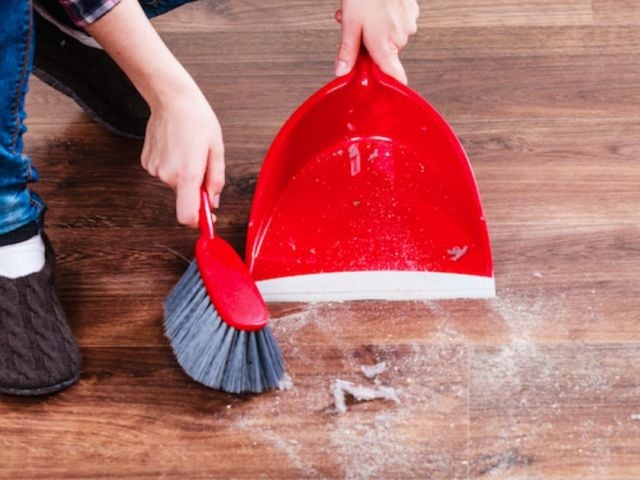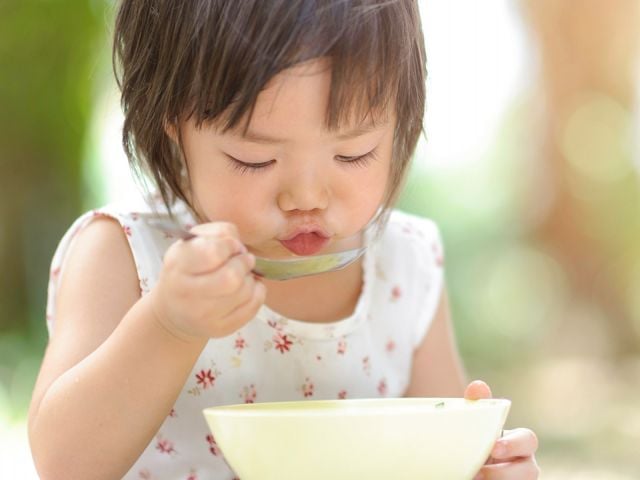
This post is by EWG research intern Natalia, who's been hard at work assisting with our report about triclosan in consumer products.
Although most shoppers probably don't know it, "antibacterial" isn't just for soap anymore. From sports clothing to cutting boards, deodorants, and children's toys, a wide range of consumer products are now commonly treated with antimicrobial pesticides such as triclosan.
Never heard of triclosan? You're not alone - most people haven't! But if you look at the back label of your antibacterial soap, it's likely you will find it listed as the active ingredient. In fact, you might be amazed how many consumer products contain triclosan. Besides extensive use in liquid soaps and numerous personal care products, different antibacterial chemicals are added to plastics and textiles to provide protection against bacteria and mold and to eliminate odors.
It's easy to think that antimicrobial products solve many immediate problems: they kill bacteria on your hands and prevent mildew growth in your carpet. And indeed, in a time when many Americans are becoming increasingly concerned with cleanliness, antimicrobial products may appear to be perfect weapons in our "war on germs." However, the American Medical Association, Food and Drug Administration, and numerous scientists all around the world would beg to differ.
In 2002, the American Medical Association has publicly recommended that "[because] no data exist to support their efficacy when used in such products or any need for them [-] it may be prudent to avoid the use of antimicrobial agents in consumer products."
And in 2005, researchers from Tufts University, Columbia University, and University of Michigan reached the same conclusion:
"Currently, no evidence suggests that use of antibacterial soap containing 0.2% triclosan provides a benefit over plain soap in reducing bacterial counts and rate of infectious symptoms in generally healthy persons in the household setting."
Fair enough; but the argument against the use of antimicrobial products isn't simply about whether or not antibacterial hand soap has health benefits. It's also about what happens after you wash that soap down the drain.
Antimicrobial compounds like triclosan tend to be broad-spectrum in focus, acting against a large group of micro-organisms rather than a particular species. The problem is that not everything that these chemicals target is actually bad for you - in fact, you probably rely on the help of some of these organisms every day. I'd like to take this moment to introduce the humble Pseudomonas.
 Accompanied by several species of industrious bacteria, protozoa, and occasionally fungi, this tiny bacterium plays a vital role in many wastewater treatment plants across the country as part of the "activated sludge process." Because they help break down raw sewage to prepare it for later processing, proper sewage treatment would not be possible without these little guys - but unfortunately, they're also very vulnerable to antimicrobial compounds.
Accompanied by several species of industrious bacteria, protozoa, and occasionally fungi, this tiny bacterium plays a vital role in many wastewater treatment plants across the country as part of the "activated sludge process." Because they help break down raw sewage to prepare it for later processing, proper sewage treatment would not be possible without these little guys - but unfortunately, they're also very vulnerable to antimicrobial compounds.
The problem doesn't stop there, however. Standard sewage treatment methods are not designed to remove pharmaceuticals, chemicals from personal care products, and antimicrobial compounds that flow down the drain. And indeed, scientific studies indicate that a significant portion of triclosan remains in the wastewater discharged by sewage treatment plants into lakes, rivers, and oceans.
On top of that, when pure triclosan is sold as an additive to manufacturers, the EPA requires all product safety labels to include this warning: "This pesticide is toxic to fish and other organisms. Do not discharge into lakes, streams, ponds, estuaries, oceans, or other public waters." I've added the bolding, but warning's meaning is quite clear: even if the amount of triclosan released to our waterways may seem small, it can nevertheless have big effects.
When concentrations of triclosan build beyond certain (fairly low) levels, it can kill all kinds of aquatic life, including algae and invertebrates such as crawfish and crabs. Furthermore, it can disrupt entire food chains, as fish that eat the affected algae and invertebrates can accumulate triclosan in their own tissues. In turn, this can lead to buildup of triclosan in the fatty tissues of birds and humans that consume these fish, thereby completing the unpleasant cycle. Ultimately, it seems that although antimicrobials are now found in a wide variety of consumer products, the "perfect solution" they offer is in fact not so perfect at all. Although antibacterial compounds in hand soaps and surgical masks do play an important role in preventing the spread of infection in hospital settings, studies have shown that compounds such as triclosan provide dubious, if any, short term health benefits in everyday settings. In addition, these chemicals' harmful effects on helpful bacteria and aquatic life can have further consequences for human health.
So the next time you're at the store, show your local fish and Pseudomonas that you care - take a moment to read the ingredients label before buying that new bottle of soap. They'll thank you for it.
Photo by Anthony Salvi.



